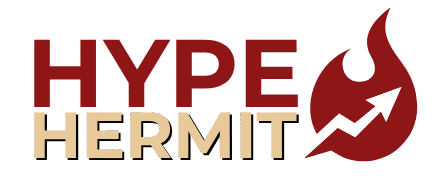Have you ever felt your shoulders tighten during a hard day? Or noticed your stomach clench when you feel anxious? Your body holds onto stress and memories in a way that words sometimes can’t reach. This is often trauma stored in the body.
Many people spend years in therapy talking about their feelings. This is helpful. But they often hit a frustrating wall. The physical feelings of tension, panic, or pain don’t go away. It can feel like you’re stuck.
There is another way. Somatic wellness practices focus directly on this body-mind connection. They offer tools to release the deep, physical roots of trauma. This approach can work alongside talk therapy, or for some, serve as a powerful alternative.
In this guide, you will discover eight simple practices. They help you work with your body’s own wisdom to find relief. This is the core benefit of somatic therapy: healing that includes all of you.
Somatic Wellness Infographics
Understanding Somatic Wellness: Why the Body Remembers
How Trauma Manifests Physically
Bottom-Up vs Top-Down Approaches
Somatic (Bottom-Up)
Works with the body’s sensations and nervous system to release stored trauma
Traditional (Top-Down)
Focuses on thoughts, analysis, and cognitive processing of trauma
How Somatic Wellness Complements Traditional Therapy
Where Talk Therapy Reaches Its Limits
Integrated Approach Benefits
1. How to Use Body Scanning to Feel Calmer and Safer

Your body holds on to stress. You might feel tense without knowing why. A body scan is a simple way to notice this tension. It helps you become aware of what you feel inside. This skill is called interoception.
Here is how it works. You slowly pay attention to each part of your body, from your toes to your head. You do this without judging what you find. If you notice a tight area, you don’t try to change it.
You just notice it. This non-judgmental observation makes your body feel safe. Over time, it can show you where you store old stress or trauma. This practice is the first step for many other body-based healing methods.
Programs like the one at Johns Hopkins use body scanning as a starting point for self-care. It is a core part of somatic wellness practices. This builds your body awareness and helps you feel more in control.
2. How to Calm Your Overwhelmed Nervous System with Breath

When you feel anxious or overwhelmed, your breathing gets fast and shallow. This tells your body it’s in danger. But you can use your breath to tell your body it’s safe again. This is called therapeutic breathwork.
Your breath is directly connected to your nervous system. By changing your breathing pattern on purpose, you can calm down. A long, slow exhale is especially powerful.
It reduces activity in the part of your brain that processes fear. This can release tension you’ve been holding. Different breathing patterns can either energize you or help you relax.
Try the 4-7-8 method. Breathe in for a count of four. Hold your breath for a count of seven. Then breathe out slowly for a count of eight. Doing this a few times can feel like a “reset” for your nervous system. It’s a core part of somatic wellness practices that you can do anywhere.
3. How to Stop Anxious Thoughts with Simple Grounding

Anxious or spaced out, your mind is stuck in the past or future. This can lead to flashbacks or panic. Grounding pulls you back into the present. It makes you feel safe right here, right now.
Grounding works by focusing on physical sensations. This tells your brain you are not in actual danger. It is a simple tool you can use every day. It is especially helpful when you feel triggered.
Here is how to do it. Push your feet firmly into the floor. Notice how the ground feels under you. Or, put your hands in warm water and feel the temperature.
Another way is to name five things you can see around you. These small actions anchor your awareness. They are a key part of somatic wellness practices. You can feel the difference in just a few moments.
4. How to Build Emotional Stability with Resourcing

Overwhelmed, it’s hard to remember that safety exists. Resourcing helps you find your way back. It is a simple way to build emotional stability before you even feel distressed.
Resourcing means finding your personal anchors of safety. These can be internal or external. Think of a person who makes you feel calm. Picture a place where you feel completely at peace. Or remember a time you felt strong and secure. These become your “anchor memories.”
Here is why this works. When you feel upset, your brain focuses only on the threat. But by focusing on a resource, you give your brain proof of safety. This provides psychological stability.
A great technique is the Butterfly Hug. Cross your arms over your chest and gently tap your hands on your upper arms. Breathe slowly and bring one of your anchor memories to mind. This combines physical comfort with emotional resourcing. It is a core somatic wellness practice for tough moments.
5. How to Manage Stress Without Feeling Overwhelmed

When you feel a painful sensation or emotion, your instinct might be to fight it or run away. This often makes the feeling stronger. Pendulation is a better way. It teaches your body that it can move between stress and safety.
Pendulation is like a gentle swing. You notice a place in your body that feels tight or uncomfortable. You just acknowledge it. Then, you consciously move your attention to a part of your body that feels neutral or calm.
This could be your hands, your feet, or simply your breath. You stay with that comfortable feeling for a moment. Then, you gently swing your attention back to the tense area.
Here is why this works. It prevents you from being overwhelmed by a difficult feeling. You visit the discomfort, but you don’t live there. This builds your capacity for emotional regulation.
You learn that stress is temporary and that you have the power to find calm. This builds real confidence in handling life’s tough moments.
6. How to Release Old Pain Safely with Titration

Trying to process a lot of trauma at once can feel like being flooded. It’s overwhelming and can make you feel worse. Titration offers a safer path. It helps you approach difficult memories in tiny, manageable pieces.
Titration works like this. You only touch upon the edge of a painful feeling or memory. You then quickly return your focus to a safe feeling in your body.
This prevents your nervous system from becoming overwhelmed. It allows your body to process small bits of the trauma slowly, so it can be integrated without causing more harm.
Think of it like walking into a dark room. If you rush in, you’ll be disoriented and might trip. But if you step in slowly, your eyes have time to adjust. Titration works the same way for your nervous system.
You let your system adjust to small amounts of distress so it can learn to handle it. This method is a careful and gentle part of somatic wellness practices.
7. How to Release Trapped Stress with Mindful Movement

Have you ever felt so stressed that your body feels tight and frozen? This is often trapped survival energy. Your body got ready to fight or run, but couldn’t. Mindful movement helps you safely release this pent-up energy.
Think of a wild animal. After a close call with danger, it will often shake or tremble for a moment.
Then it moves on as if nothing happened. It doesn’t stay stuck in the fear. Our bodies are meant to do the same. Shaking, dancing, or gentle trembling are natural ways to discharge this stress.
You don’t need to do anything intense. Practices like tai chi or qigong are perfect. They combine slow, flowing movement with your breath and awareness.
The key is to listen to what your body wants to do. This can be adapted for any mobility level. Even small, gentle movements in a chair can help your nervous system let go of old tension.
8. How to Calm Down Instantly with Self-Touch

When you feel anxious, a simple touch can make a big difference. Your skin is your largest organ, and gentle pressure sends a direct message of safety to your brain. This is called self-touch, and it’s a powerful tool for regulation.
Your nervous system responds to caring contact. Placing a warm hand over your heart or belly is especially calming. This action can slow a racing heart and ease shallow breathing.
It activates your body’s natural relaxation response. This simple method is known as “tactile activation” in programs like the one at Johns Hopkins.
The best part is that you can do this anywhere, anytime. No one needs to know. If you feel stress building at work or in a crowd, just rest your hand on your chest. Take a slow breath. This small gesture of self-care reminds your body that it is safe right now. It is one of the simplest somatic wellness practices you can use.
Conclusion
True healing often happens when we listen to our bodies, not just our thoughts. Somatic wellness practices offer a powerful path to do this. They help with trauma that is stored deep in your body. For many people, this approach works better than talk therapy alone.
The main thing to remember is this: your body has a natural ability to heal itself. You just need to give it the right tools and attention. This body-mind connection is where real change begins.
Your healing journey can start right now. Pick one simple practice from this list. Do you feel tension somewhere? Try a three-minute body scan. Or just put a hand on your heart and take a few gentle breaths. It doesn’t need to be complicated. Your body has been waiting to have this conversation with you.


